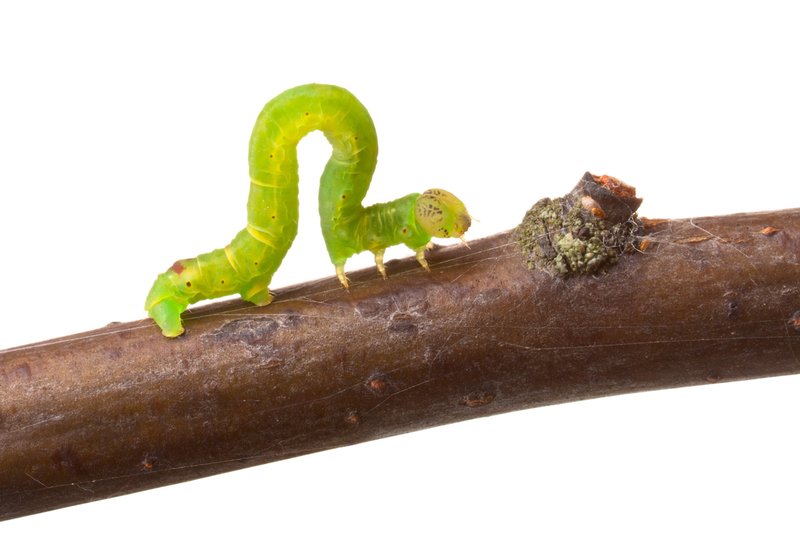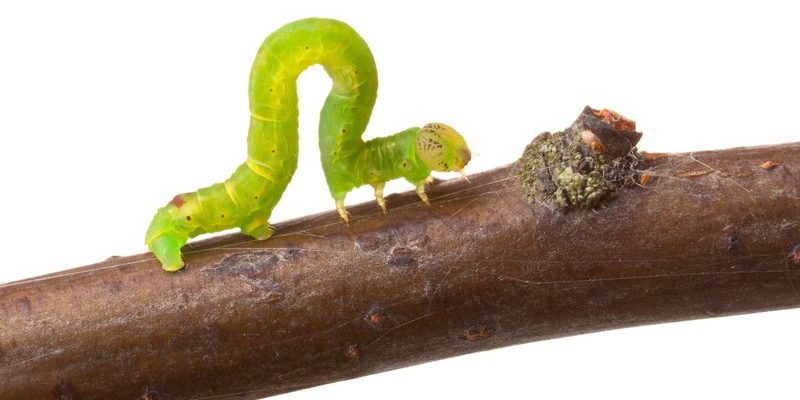
You might be wondering why elevations matter when it comes to inchworm activity. Well, elevation influences everything from temperature to humidity and even the types of plants that grow. So, if you’re ever out exploring the great outdoors, pay attention to those inchworms! They can give you insight into the ecosystem at different heights.
What Are Inchworms?
Inchworms aren’t a single species but rather the larvae of various moths, often belonging to the Geometridae family. You might think of them as nature’s little acrobats—spending their days hanging off leaves and branches, slowly inching along. Their unique locomotion involves contracting and stretching their bodies, which is quite a sight to behold.
These creatures come in various colors and sizes, but they typically share a few common traits. Most are green, brown, or gray, helping them blend seamlessly with their surroundings. This camouflage is a fantastic defense against predators. Additionally, inchworms are herbivores, munching on leaves and tender shoots. You might notice them getting more active as the weather warms up, which brings us to how elevation plays a role in their behavior.
The Impact of Elevation on Temperature
One of the most significant factors influenced by elevation is temperature. As you climb higher, temperatures usually drop. This temperature change can greatly affect inchworm activity levels. At lower elevations, where it’s warmer, inchworms are more likely to be active during the day. They thrive in the heat and can often be found munching away on foliage.
However, as you ascend to higher altitudes, the cooler temperatures can lead to reduced activity. Inchworms may become sluggish and less likely to feed, opting instead for a more energy-efficient lifestyle. If you’re trekking up a mountain and see fewer inchworms, it might not be because they’ve all disappeared; they could just be taking it slow to conserve energy.
Moisture Levels and Inchworm Behavior
Along with temperature, moisture levels are another critical factor that varies with elevation. Lower elevations tend to be more humid, creating a thriving habitat for inchworms. They benefit from the availability of food and moisture, which helps them stay hydrated and active.
In contrast, as you climb to higher elevations, you often encounter drier conditions. This dryness can have a direct impact on how inchworms behave. They may become less active or move to more sheltered areas where moisture is more readily available. Think of it like this: just as you might seek shade on a hot day, inchworms also look for spots that help them stay comfortable.
Food Sources at Varying Elevations
What inchworms eat significantly depends on the types of plants available at different elevations. At lower elevations, there’s usually a greater variety of leafy plants, providing plenty of food for these little guys. They merrily munch on the leaves of shrubs, trees, and even garden plants.
As you move to higher altitudes, the landscape can change dramatically. You’ll likely encounter fewer plant species, and these might be hardier and tougher. These changes can limit the food supply for inchworms. Consequently, you might observe a decline in their populations at higher elevations. However, some inchworms are adaptable and can thrive in various environments, but they still rely heavily on the plant life around them.
Inchworm Activity Patterns Across Elevations
Now that we’ve talked about temperature, moisture, and food sources, let’s dive into the actual activity patterns of inchworms. At lower elevations during spring and summer, inchworms are usually quite vigorous. They are often out and about in the daytime, happily inching along to find food. Early mornings or just after rain are prime times to see them actively feeding.
However, as you venture into higher elevations, you may notice that their activity slows down significantly. In cooler climates or areas with fewer vegetation options, they might only come out during warmer days. You could say that inchworms at high elevations are like introverts at a party—they need the right conditions to feel comfortable enough to mingle!
Finding Inchworms in Different Settings
If you’re eager to see inchworms in action, knowing where to look is key. In gardens and forests at lower elevations, they’re often easy to spot, especially during the growing season. Keep an eye on leafy plants, as this is where they tend to hang out.
When venturing to higher elevations, your best bet is to explore areas with sheltered vegetation or near water sources. Look for inchworms hiding under leaves or amongst the branches. They may not be as visible, but they’re still there, adapting to their cooler, drier surroundings.
Inchworms may be small, but they are incredible creatures that showcase nature’s adaptability. Understanding how elevation affects their activity not only enriches your outdoor experience but also underscores the delicate balance of ecosystems. Whether you’re hiking up a mountain or strolling through a local park, keep an eye out for these fascinating inchworms. Their unique behaviors tell stories about their environment and how life adjusts to various challenges. So next time you see one inching along, think about the journey it must take just to survive in its ever-changing world. Happy exploring!

